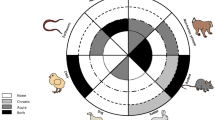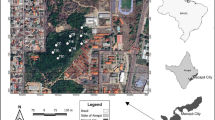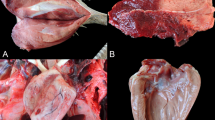Abstract
The possibility that fenthion, an organophosphorus pesticide, could represent a secondary poisoning hazard to birds of prey was tested, using American kestrels (Falco sparverius) and house sparrows (Passer domesticus) as representative models of a naturally occurring predator-prey interaction. Fourteen kestrels were presented with live sparrows exposed previously to perches containing Rid-A-Bird 1100® solution (11% fenthion active ingredient). Eleven kestrels died within twenty-four h after consuming one fenthion-exposed sparrow. Two kestrels died after consumption of a second fenthion-exposed sparrow on day 2, and a final kestrel died after partially consuming a third fenthion-exposed sparrow on day 3. Brain cholinesterase (ChE) activity in kestrels was depressed to levels diagnostic of poisoning by a ChE-inhibiting compound. The majority of fenthion contamination of sparrows was external, with the highest amounts measured on the feet. The detection of fenthion residues in kestrel gastro-intestinal tracts confirmed secondary fenthion poisoning.
Similar content being viewed by others
References
Besser JF, DeCino TJ (1963) Progress report on laboratory and field tests with Bayer 29493 (DRC-632) for the control of urban pest birds. US Dept. Interior, Bur Sport Fish Wildl, Denver, CO
Bird DM (1982) The American kestrel as a laboratory research animal. Nature 299:300–301
Bruggers RL, Jaeger MM, Keith JO, Hegdal PL, Bourassa JB, Latigo AA, Gillis JN (1989) Impact of fenthion on nontarget birds during quelea control in Kenya. Wildl Soc Bull 17:149–160
Canadian Wildlife Service (1988)Anatum Peregrine Falcon Recovery Plan. Minister of the Environment, Ottawa, Ontario, Canada
DeWeese LR, McEwen LC, Settimi LA, Deblinger RD (1983) Effects on birds of fenthion aerial application for mosquito control. J Econ Entomol 76:906–911
Dominick HJ, Long TF, Mudgett CC, Riecks FL, Vassmer MC (1989) Four episodes of apparent secondary poisoning of raptors by an avicide, fenthion, in Illinois. Illinois Dept Pub Health, Springfield, IL
Ellman GL, Courtney KD, Andres V Jr, Featherstone RM (1961) A new and rapid colorimetric determination of acetylcholinesterase activity. Biochem Pharmacol 7:88–95
Francis JI, Barnes JM, (1963) Studies on the mammalian toxicity of fenthion. Bull WHO 29:205–212
Hanson J, Howell J (1981) Possible fenthion toxicity in magpies (Pica pica). Can Vet J 22:18–19
Henny CJ, Kolbe EJ, Hill EF, Blus LJ, (1987) Case histories of bald eagles and other raptors killed by organophosphorus insecticides topically applied to livestock. J Wildl Dis 23:292–295
Hill EF (1988) Brain cholinesterase activity of apparently normal wild birds. J Wildl Dis 24:51–61
Hill EF, Fleming WJ (1982) Anticholinesterase poisoning of birds: field monitoring and diagnosis of acute poisoning. Environ Toxicol Chem 1:27–38
Hill EF, Mendenhall VM (1980) Secondary poisoning of barn owls with famphur, an organophosphate insecticide. J Wildl Manage 44:676–681
Holler NR, Schafer EW Jr (1982) Potential secondary hazards of avitrol baits to sharp-shinned hawks and American kestrels. J Wildl Manage 46:457–462
Hudson RH, Tucker RK, Haegele MA (1984) Handbook of toxicity of pesticides to wildlife, 2nd ed. US Fish and Wildl Serv Resour Publ 153
Hunt KA (1990) Secondary poisoning hazard of fenthion to American kestrels. MSc thesis, McGill Univ., Montreal, Quebec, Canada
Illinois Department of Agriculture (1988) Laboratory report of a Cooper's hawk, specimen no. 88-22,803. Anim Dis Lab, Centralia, IL
Jandel Scientific (1989) Sigma plot user's manual, version 4. Corte Madera, CA
Ludke JL, Hill EF, Dieter MP (1975) Cholinesterase (ChE) response and related mortality among birds fed ChE inhibitors. Arch Environ Contam Toxicol 3:1–21
Macaulay A, Trudeau S (1988) Cholinesterase assay protocol. Can Wildl Serv, Toxicol Res Div, Hull, Quebec, Canada
McIlroy JC (1984) The sensitivity of Australian animals to 1080 poison. Aust Wildl Res 11:373–385
Mueller HC (1973) The relationship of hunger to predatory behaviour in hawks (Falco sparverius andButeo platypterus). Anim Behav 21:513–520
Novalab Ltd (1989) Method development for the analysis of fenthion and other organophosphorus pesticides in avian tissue. Contract # KE 144-8-6444 by the Wildl Toxicol Surv Brch, Can Wildl Serv, Environ Can
Palmer RS, (1988) Handbook of North American birds, Vols. 4 and 5. Yale University Press, New Haven, CT
SAS Institute Inc (1985) SAS user's guide: statistics, version 5 edition. SAS Institute Inc, Cary, NC
Schafer EW Jr (1984) Potential primary and secondary hazards of avicides. Proc Vertebr Pest Conf 11:217–222
Schafer EW Jr, Brunton RB, DeCino TJ, Cunningham DJ (1964) Acute oral toxicity of DRC-632 to the house sparrow, and the secondary hazard of DRC-632 to sparrow hawks. US Dept Interior, Bur Sport Fish Wildl, Denver, CO
Schafer EW Jr, Brunton RB, Lockyer NF, DeGrazio JW (1973) Comparative toxicity of seventeen pesticides to the quelea, house sparrow, and red-winged blackbird. Toxicol Appl Pharmacol 26:154–157
Schafer EW Jr, Cunningham DJ (1965) Further tests with DRC-632: toxicity of Queletox perch-killed sparrows to the sharp-shinned hawk. US Dept Interior, Bur Sport Fish Wildl, Denver, CO
Schafer EW Jr, West RR, Cunningham DJ (1969) New starling toxicant: DRC-1347. Pest Control 37:22–30
Seabloom RW, Pearson GL, Oring LW, Reilly JR (1973) An incident of fenthion mosquito control and subsequent avian mortality. J Wildl Dis 9:18–20
Smith GJ, Spann JW, Hill EF (1986) Cholinesterase activity in black-crowned night-herons exposed to fenthion-treated water. Arch Environ Contam Toxicol 15:83–86
Sokal RR, Rohlf FJ (1981) Biometry, 2nd ed. WH Freeman, San Francisco, CA, p 413
Thomsett S (1987) Raptor deaths as a result of poisoning quelea in Kenya. Gabar 2:33–38
US Fish and Wildlife Service (1986) Diagnostic services case report of a bald eagle, case no. 6082-001. Natl Wildl Health Lab, Madison, WI
Wenneborg R (1986) Rid-A-Bird. Hawk Chalk 25(1):47–48
Wiemeyer SN, Lincer JL (1987) The use of kestrels in toxicology. In: Bird DM, Bowman R (eds) The Ancestral Kestrel, Raptor Research Reports No. 6. Raptor Research Foundation Inc and Macdonald Raptor Research Centre of McGill University, Ste Anne de Bellevue, Quebec, Canada, pp 165–178
Zinkl JG, Jessup DA, Bischoff AI, Lew TE, Wheeldon EB (1981) Fenthion poisoning of wading birds. J Wildl Dis 17:117–119
Author information
Authors and Affiliations
Rights and permissions
About this article
Cite this article
Hunt, K.A., Bird, D.M., Mineau, P. et al. Secondary poisoning hazard of fenthion to American kestrels. Arch. Environ. Contam. Toxicol. 21, 84–90 (1991). https://doi.org/10.1007/BF01055561
Received:
Revised:
Issue Date:
DOI: https://doi.org/10.1007/BF01055561




